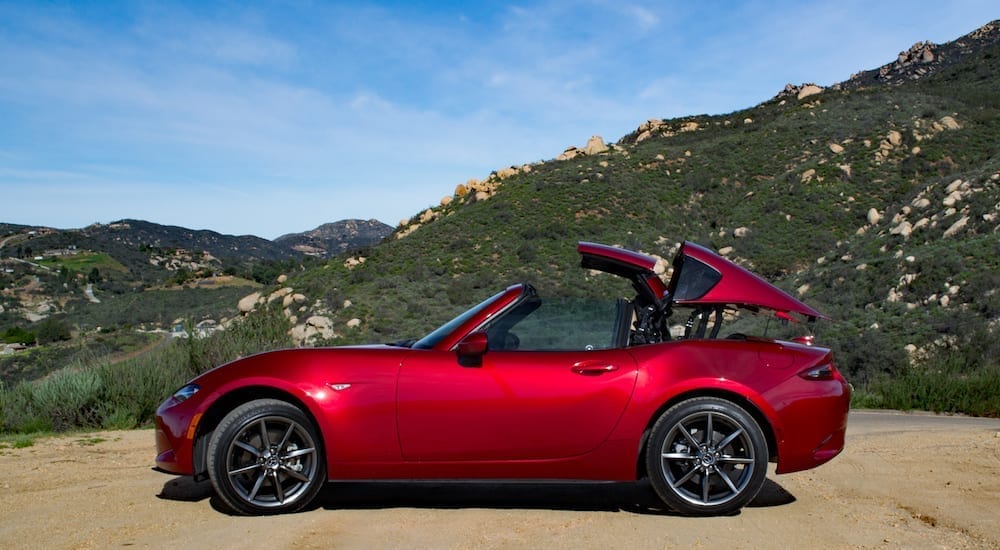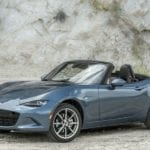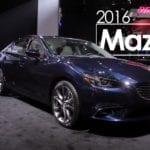If you’re like this, you’re obsessed with all things cars, and this obsession also includes specific car brands. Well, for those interested in Mazda’s array of luxurious vehicles, we have a treat for you. The brand recently sat down with one of their main production engineers, Takaki Nakamura. This individual has been responsible for designing many of Mazda’s offerings, and one of his latest projects has been production on the unique MX-5 RF sports car.
Below, we’ve highlighted some of Nakamura’s major quotes during the interview, which helps accentuate what goes into the brand’s designing process. Continue reading below for insight into how the brand (and this specific engineer) operates. This might not necessarily influence what specific model you want to pursue. However, when you’re finished reading some of these quotes, we can bet you’ll be itching to visit a “Mazda dealership near me…”
On how he got into cars in the first place:
“I’ve loved cars since my student days. I loved driving too, but I had more fun dismantling cars and tinkering with them. When I came to work for Mazda I wanted to get my hands dirty, not be tied to a desk.”
On what he (and, more so, the brand) focuses on during the “production” phase of the car-designing process:
“There are inherent limitations in production related to equipment and processes. On the other hand, if design proceeds with an awareness of these limitations, new monotsukuri possibilities can open up.”
“Production takes place amid a lot of machinery but involves craftsmanship. When you find something in the drawings for a new car that won’t work with the equipment you have, the car can’t be produced. So you have to ask for the specs to be changed. This has happened quite a bit.
“But, by understanding the intent behind the design, you can appreciate the importance of the functions needed for the car included in the drawings and the value the designer wants to offer the customer. You don’t just do what you can. You have to consider what can be done from the production standpoint and how problems can be solved. I came to feel that was my job.”
One of his major projects has been the MX-5 RF. What was production like on this specific vehicle, and what were any hardships or issues that his fellow engineers came across:
“In the early stages of development when the design for the vehicle was revealed, so many problems arose that I wondered whether we’d even be able to make the car. So I went to see the designers and the engineers who designed the mechanisms and offered some suggestions.”
“For example, in the soft-top model the back end of the glass in the doors is round, but in the RF it is angular. I said that in terms of efficient production it would be better to use the same design as the soft-top. But the designers wouldn’t compromise on that point. They said they’d come up with that shape after a lot of thought. They insisted it was not only a key to the beauty of the design but also a way to ensure a good field of vision for the driver. It comes down to a choice between difficulties associated with production and the originality devised for the benefit of the customer. I understood the situation, so of course, I gave the go-ahead, because coming up with a strategy for that purpose is our job.”
One of the most innovative aspects of the vehicle included the unique roof-opening function. How easy was it combining the literal production design with the literal production of the vehicle?
“A lot of thought went into both the design and functionality of the retractable hardtop. When I saw the design drawing, the first thing I thought was ‘This is unusual.’ Adjoining parts are packed into a small space whether the hardtop is open or closed, and if they get even the slightest bit out of alignment, the top may not open and close properly.”
“In terms of product quality, at Mazda, we believe that trouble-free operation and preventing noise and vibration are a matter of course when manufacturing cars. When we focus on a specific area to express a vehicle’s uniqueness, we refer to that as ‘appeal quality.’ With the retractable hardtop on the MX-5 RF, a very high level of technical capability was needed just to achieve ‘matter-of-course quality.’ And we had a strong sense that this in itself would lead to ‘appeal quality.’”
“If we had the luxury of lots of time and plenty of craftsmen to produce each car, the obstacles wouldn’t be so great. But with Mazda’s flexible production various models come down the same line; from MX-5s to Mazda2s. And we have to produce tens of thousands of high-quality MX-5 RF cars without holding up the line.”
“I have to rack my brains to figure out what to do. Knowledge and hard work will open up a path. That’s the only way I can move forward. I don’t want to go to the engineers and designers and try to argue them down. They were driven by a passion and it was infectious. I decided to take up the challenge, so I had to follow through.”
What he looks most forward to when he’s designing a vehicle:
“What expression will customers have on their faces when they see the cars we’ve made here? I’m sure they’ll smile. And what will their expression be after they’ve enjoyed driving the car for quite a while? I want them to be smiling then too. I feel that my job is to ensure that that happens. And when I think about that, I have the customers in mind rather than Mazda. I’m not just saying this. That’s how I truly feel now at the age of 27.”



